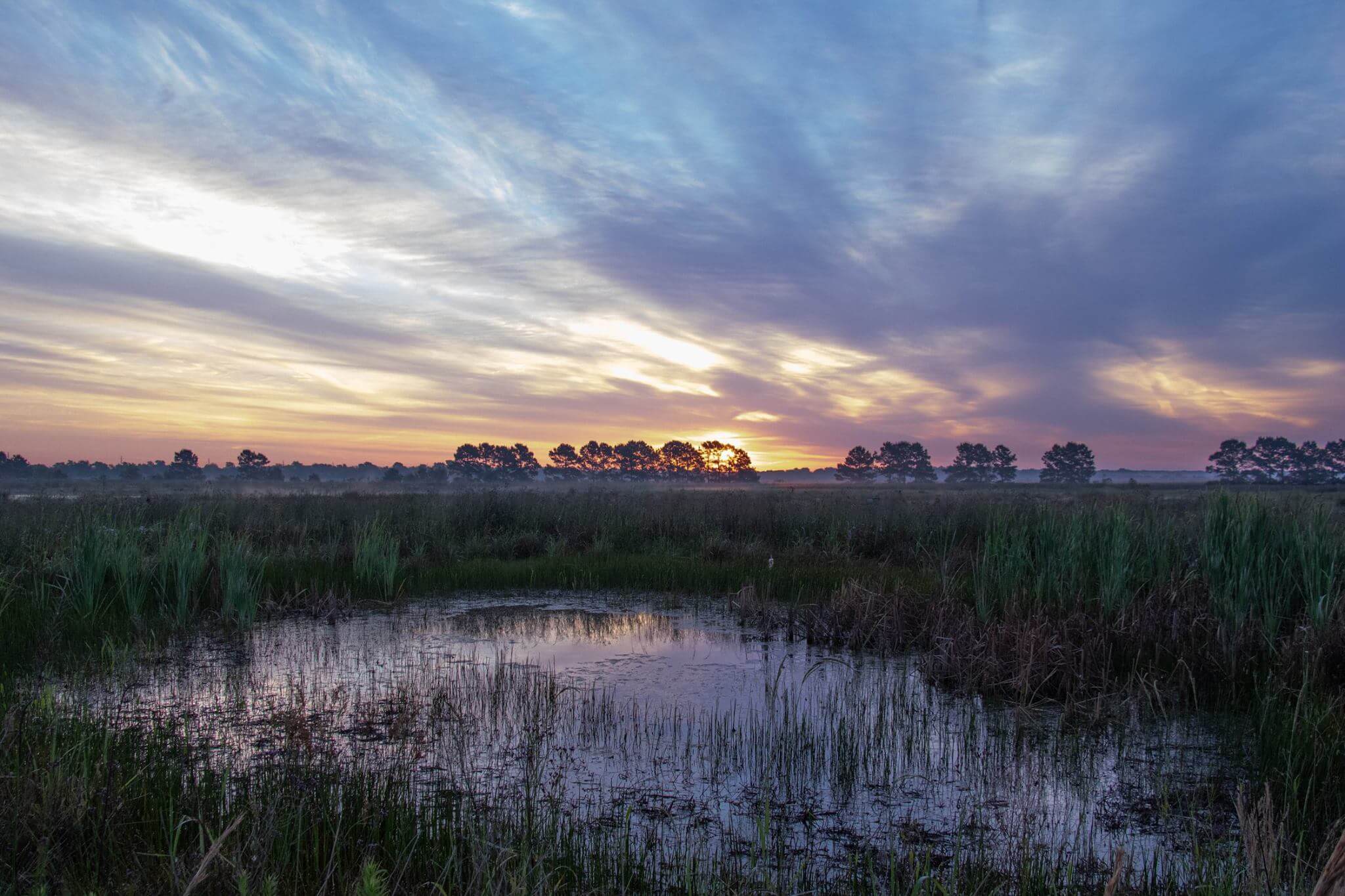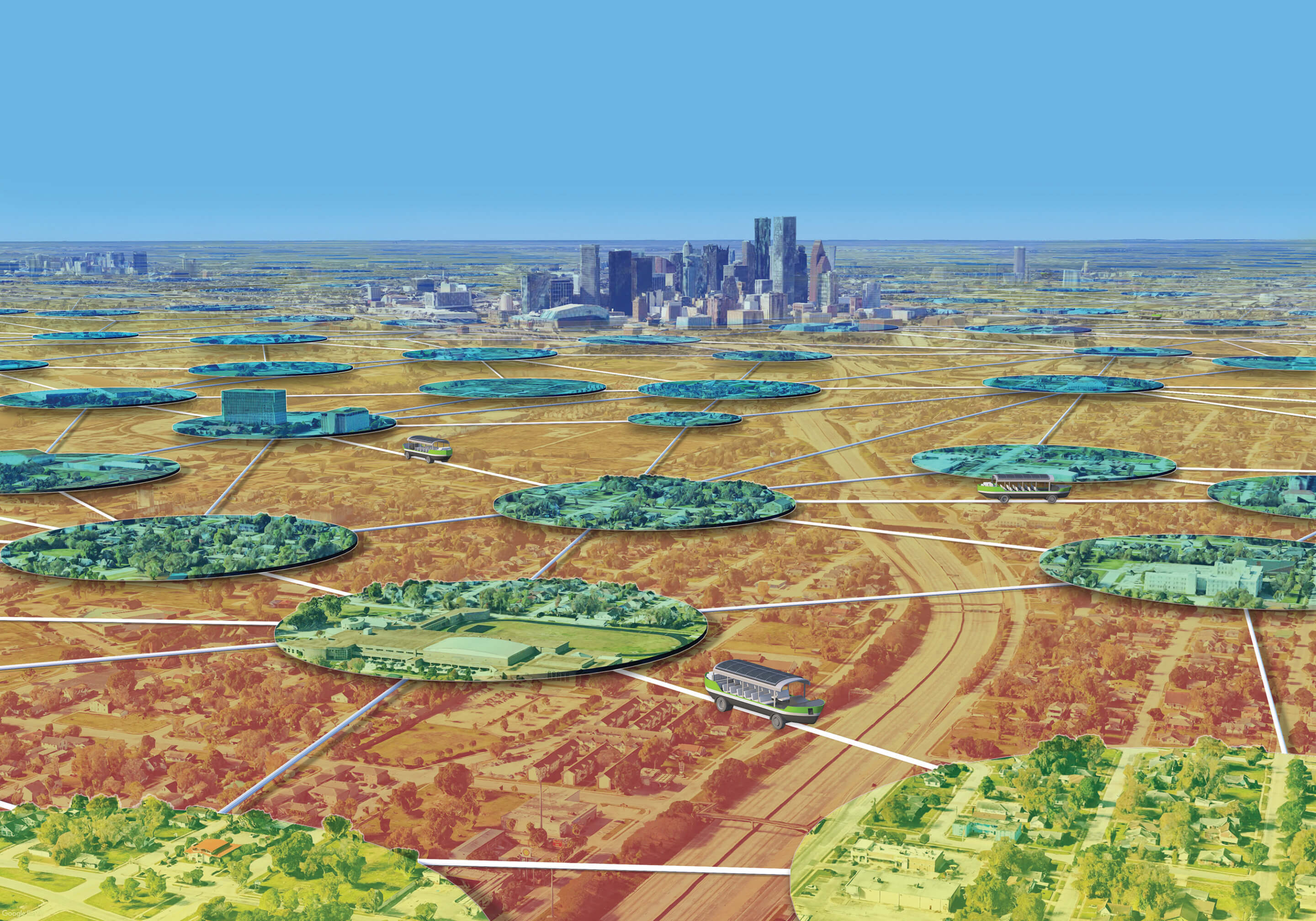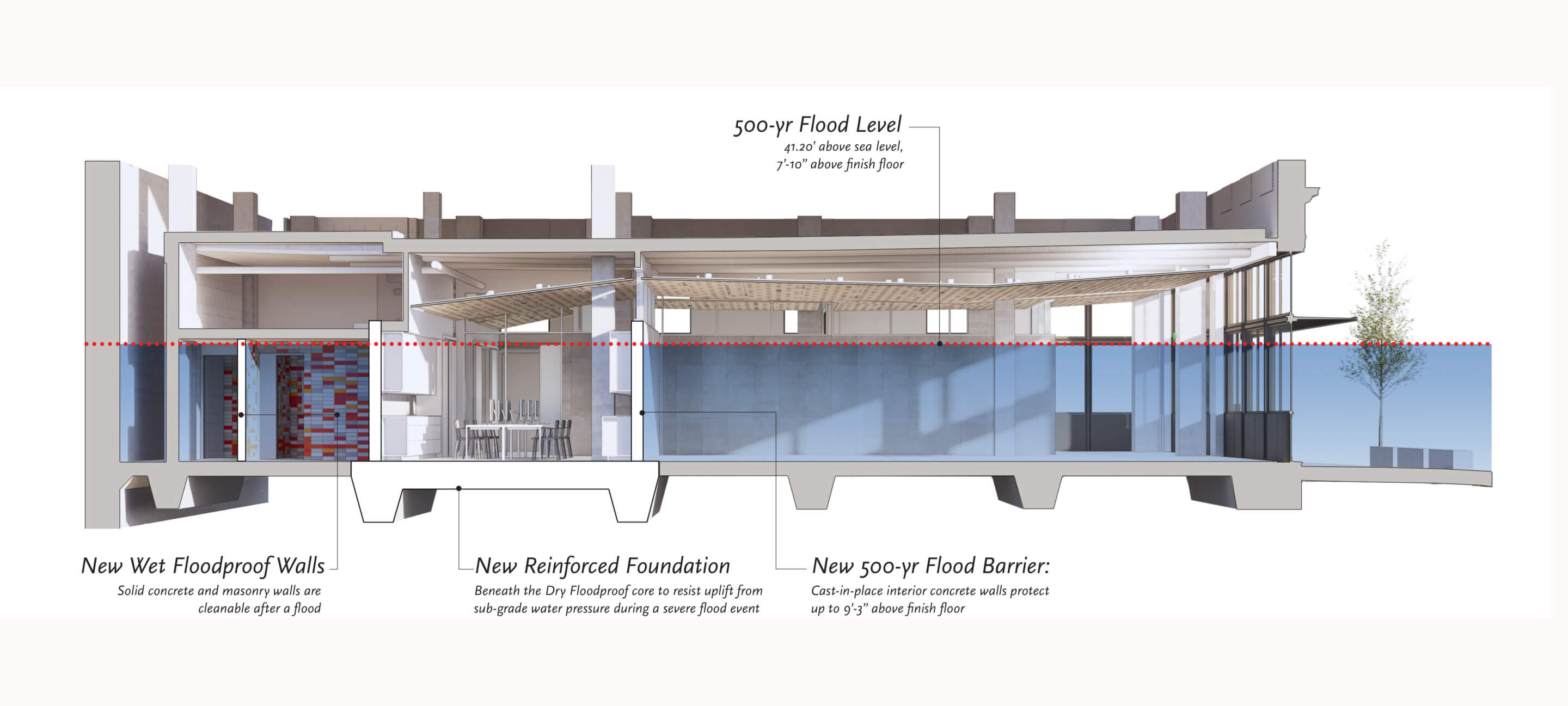It is a cruel joke that a handful of so-called 500-year floods have befallen Houston in the past five years alone. Hurricanes Harvey in 2017, Imelda in 2019, and Laura in 2020 pummeled the Bayou City, and a catastrophic February 2021 winter storm left it waterless and powerless for days. Experts had been sounding the alarm regarding Houston’s insufficient preparedness well ahead of these weather events. (A 2016 report from ProPublica and The Texas Tribune outlining how damaging a potential hurricane would be was damningly prescient.) When calamities occur on an annual basis, Houston can no longer carry on with the status quo. Enter Houston Visions 2020, an initiative and exhibition organized by the City of Houston and the AIA, marking the first collaboration of this sort between the two.
After launching in the aftermath of Harvey with a design competition for sustainable housing, the program put out a call for “visions” of Houston’s resilient future, to be evaluated over the subsequent year by a jury of five architects and city officials. The result is a total of 28 projects spanning a range of scales and programs, loosely organized into five “clusters” highlighting different development types that the city could begin implementing tomorrow. With enough city officials seeing these projects, a few of the architectural solutions just might influence planning policies and perhaps even be realized.

Such is the aim anyway. In a city that has often resisted long-term and sustainable thinking, one might expect the exhibition to have fallen on deaf ears. But for the most part, Houston Visions succeeds when it suggests that desperately needed changes to land and building uses are slowly happening already. Indeed, the home of the exhibition itself, the recently opened Architecture Center Houston, is an example of resilience in action. Flooded by Harvey while still under construction (the downtown site is very close to Buffalo Bayou), the center was completely redesigned by Murphy Mears Architects in anticipation of future inundation, with cast-in-place concrete walls surrounding the space and a thick, solidly protected concrete bunker in the center shielding the smaller office spaces. Increasingly, adjacent businesses are following suit and flood-proofing their ground floors. Preparation for the future has become the norm.
There is room for such meliorative steps in Houston Visions, just as there is for bold schemes to, say, reengineer the local ecology or produce entirely new infrastructures of care. The projects sit on a spectrum between radical and entirely plausible: for every futuristic fantasia on display, there is a tangible building or planning proposal to counterbalance it. They are presented as coextensive, even as their respective aims and programs operate at different scales and with different impacts. The approach ensures that even the most radical projects proceed on sound premises. High Hackers by Gensler, for instance, repurposes Houston’s vacant vertical building stock (which has steadily increased due to oil price drops and job losses) for use by the hacker class—i.e., makers, artists, academics. Rogers Partners’ Galveston Bay Park redevelopment, perhaps the most urgent work of the bunch, advocates fairly expansive storm surge protection. Smaller projects, such as a prefab housing scheme designed by Brett Zamore Design, and the Neighborhood Greenways project by Jay Blazek Crossley and Farm&City, which advances suburban-scale green zones and transit belts, are indications of how tactical operations can punch above their weight. Other projects do not offer buildable solutions but, rather, act as fodder for future research and development. Illustrative of this batch is Waggonner & Ball’s Living with Water, which builds on the experience of post-Katrina New Orleans to identify Houston neighborhoods with the most potential for flood mitigation. Though the scope and specificities of the visions vary greatly, presented side by side they complement one another incredibly well, jelling as a collective operation on Houston, wide-eyed in moments but never foolishly utopian.

A satellite image floor decal at the entrance depicts Hurricane Harvey’s path, a nod to the conditions surrounding the exhibition’s inception. Yet many of the projects are not explicitly about “natural” disasters or climate change (both are a result of human action), but instead foreground novel social arrangements that stand to transform Houston as we know it. The “Hubs” cluster of projects, in particular, strives to enhance the city’s existing public spaces through partnerships with community groups, as is the case with a redesign of the Theater District Square by the Houston First Corporation, and The Brutus also by Gensler (the firm has four projects in the show), which outlines an incubator for pop-up shops and small businesses near Allen’s Landing. Perhaps most compelling is Stantec’s Lily Pad network, which situates resilience in an interlace of public resources (shelters foremost among them) and communally owned and maintained assets.

Other projects stumble in their bid to “visioneer” futures for Houston. Specifically, the “Future of Energy/Economy” cluster seems loosely cobbled together, with a sweeping statement calling for Texas to shift toward total renewable-energy dependency that comes off as naive. Similarly, Kirksey Architecture’s Texas Coastal Exchange emphasizes offsetting carbon emissions while downplaying the processes that give rise to them. SHoP Architects et al.’s 270,000-square-foot Ion center in Midtown is presented as a shining nucleus for economic innovation with nary a mention of the controversial project’s role in gentrifying the Third Ward. However, these duds are few and far between and mostly speak to the strength of everything else on offer.
Make no mistake: Houston Visions strikes an urgent tone. As city council member David W. Robinson writes in his introductory text, “One wonders how much longer we can survive before implementing meaningful change.” Houston has no excuse for shortsightedness, for here are numerous feasible and inspiring ideas to put into action. All the city has to do is get to work.
Harish Krishnamoorthy is an undergraduate student at Rice Architecture, cautiously hopeful for a better-designed future.











